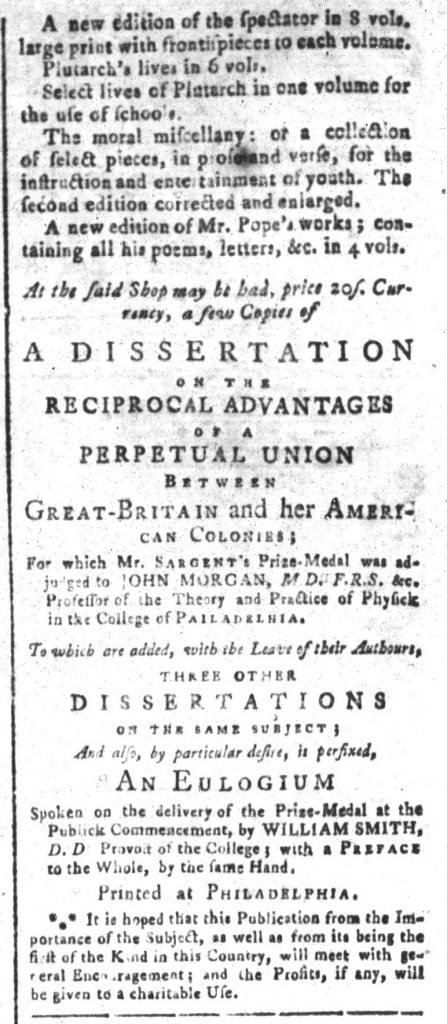What was advertised in a colonial American newspaper 250 years ago today?

“Rendered conspicuous by an elegant Sign of KING GEORGE THE THIRD.”
In March 1773, Abraham Safford took to the pages of the Essex Gazette to inform the public that he recently opened a tavern in a “commodious House” in Salem. He pledged that “Gentlemen and Ladies may be entertained in the best Manner, and on the most reasonable Terms.” To aid patrons in making their way to his new establishment, Safford advised that it was “rendered conspicuous by an elegant Sign of KING GEORGE THE THIRD.” In another advertisement in the Essex Gazette, Stephen Higginson gave his location as the “Shop opposite the King’s Arms Tavern, in SALEM.” Both advertisements appeared in the same issue that reprinted a lengthy account of commemorations that took place in Boston on the third anniversary of the “horrid Massacre perpetrated by a Party of the 29th Regiment,” including an oration on the danger of standing armies in cities by Dr. Benjamin Church, the lighting of a lantern with panes painted to depict the Boston Massacre, and the tolling of bells.
How did Safford happen to choose the “Sign of KING GEORGE THE THIRD” to mark his location and represent his business? Why did the proprietor of the King’s Arms Tavern continue to use that device? Did deploying those images suggest loyalist sympathies? Would colonizers who considered themselves patriots hesitate or even refuse to gather at those taverns? Not necessarily. As the imperial crisis unfolded, colonizers tended to critique Parliament and the soldiers that Parliament stationed in American cities while simultaneously embracing their British identity and the benefits of being part of such a powerful empire. That identify included participating in a transatlantic consumer revolution and adopting fashions popular in London. Many looked to the king to correct the excesses of Parliament, such as the Stamp Act and the Townshend Acts. As late as July 1775, the Second Continental Congress sent the Olive Branch Petition to George III in hopes of avoiding war, though by that time John Adams and others considered it a futile gesture. The king rejected the petition, demonstrating to colonizers that he had little interest in addressing their grievances. In January 1776, Thomas Paine published Common Sense, a political pamphlet that advocated for independence. His arguments included critiques “Of Monarchy and Hereditary Succession.”
Colonizers eventually identified George III as responsible for the problems within the empire, but they did not do so throughout the imperial crisis. Instead, shifting blame from Parliament to the king was a process that occurred over a decade. That Safford opened a tavern at the “Sign of KING GEORGE THE THIRD” in 1773 may have been a signal that he hoped the monarch would protect the liberties of the colonizers against the abuses perpetrated by Parliament, not necessarily an indication that the proprietor (or his patrons) supported loyalists over patriots.




